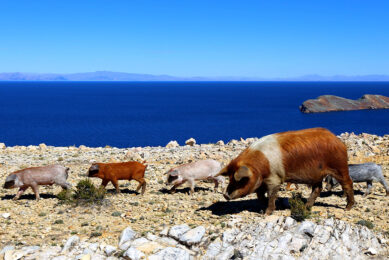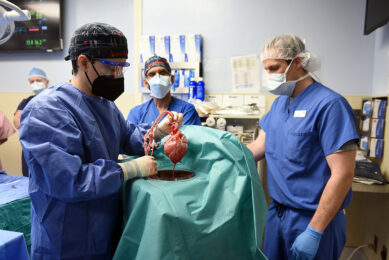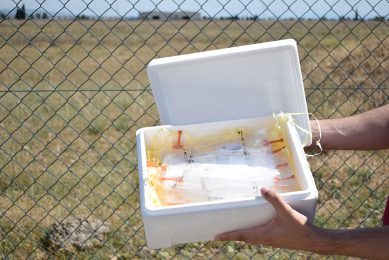Semen – the silent spreader of disease?
There has just been released an excellent review article on diseases transmitted potentially by semen to pigs by Dominiek Maes and others (2008) from the University of Ghent. It lists the number of infections, which can be transmitted by semen. It raises this question: are producers, breeders, countries even continents doing enough to control contamination of this very valuable product and its potential to spread infection?
There has just been released an excellent review article on diseases transmitted potentially by semen to pigs by Dominiek Maes and others from the University of Ghent. It lists the number of infections, which can be transmitted by semen. It raises this question: are producers, breeders, countries even continents doing enough to control contamination of this very valuable product and its potential to spread infection?
They list an interesting array of viruses that can be recovered from semen of infected boars or have been found in relation to infertility or reduced reproductive performance.
Viruses:
• African Swine Fever virus
• Classical Swine Fever virus (CSF)
• Foot-and-Mouth virus (FMD)
• Swine vesicular disease virus
• Japanese encephalitis virus
• Porcine circovirus type 2 (PCV2)
• Porcine enteroviruses
• Porcine parvovirus
• Porcine reproductive and respiratory syndrome virus (PRRSV)
• Pseudorabies virus (Aujeszky’s disease)
• Rubula virus (Blue eye disease)
Notifiable diseases
Most countries/governments know how to handle the ‘notifiable diseases’ such as CSF and FMD and strict controls are put in place regarding movement of animals and animal products, including semen, from affected areas, until the infection is eliminated.
In the UK, as an island we should be able to maintain a high health status by controlling the importation of such infections.
Biosecurity
In the main, this seems to work reasonably well and the pig industry works with Defra (Department for Environment, Food and Rural Affairs; the British ministry of agriculture) and advises them on strategy and control for notifiable diseases.
An island should be a really good example of biosecurity but this could or should apply to regions, countries or a continent too.
Exotic or novel diseases
We have seen two major examples of ‘exotic or novel diseases’ spread across Europe and between continents such as PRRSV and more recently PCV2. How much was due to animal movement and how much by semen is really an interesting question for the epidemiologist but we have not been able to stop the spread.
Movement of live animals is usually traceable and should be easy to control but sometimes we seem to forget semen, especially at a farm level. Most viruses which become systemic in the boar, at some stage will appear in the semen. It is easily transportable and is an easy way not only to transport genes but also viruses.
Stop the spread
After seeing the way the same subtype of PCV2 has tracked from France, to Germany, Denmark and Sweden and in the other direction to Quebec, Canada and the USA, it really poses the question are we doing enough to limit or stop the spread of these exotic diseases in Europe? Australia, for example, shut its borders to imports of animals and semen and has remained free of both PRRSV and the ‘pathogenic form’ of PCV2.
When the next ‘exotic disease’ starts, should we not be able to limit its spread by ‘quarantining’ a district, region or country even, possibly only on a temporary basis until we know what we are dealing with and controlling the movement of live animals (other than to slaughter) and in particular semen?











